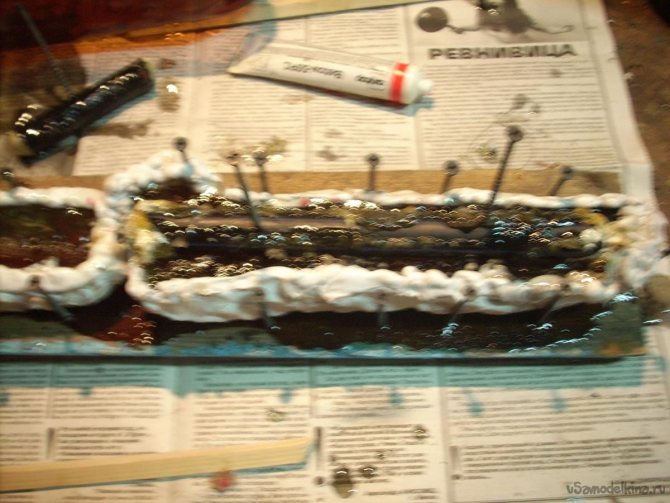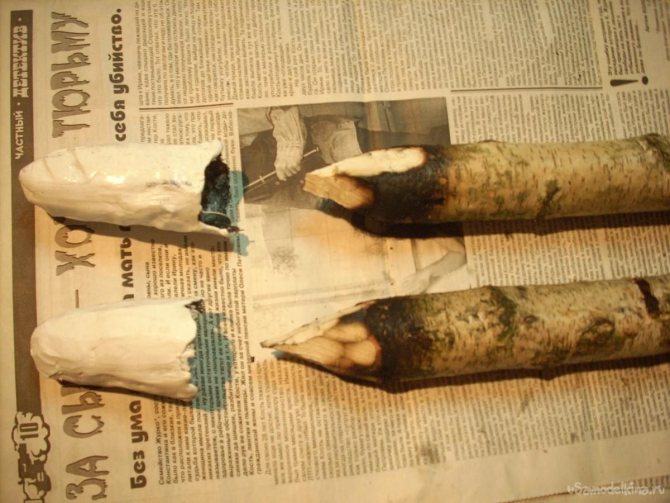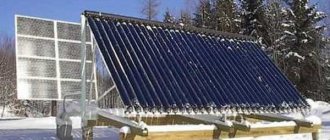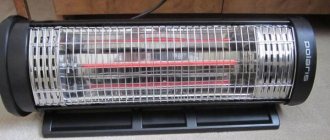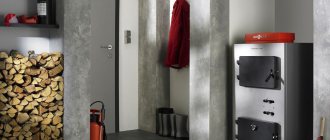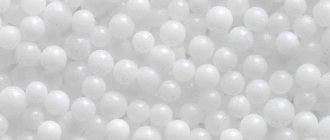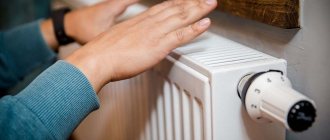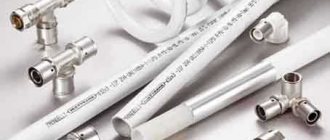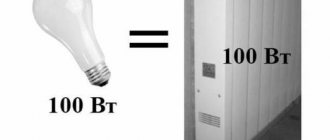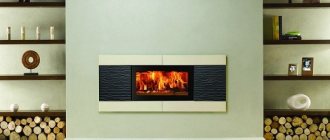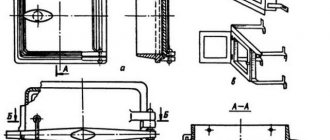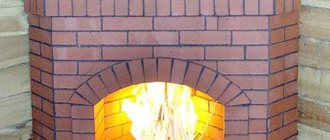How to make an artificial fire in a fireplace with your own hands, simple methods
Many people enjoy looking at a fire in a fireplace. The sight of the flame calms, allows you to relax and immerse yourself in your own thoughts. However, it is not always possible to put a real fireplace in your home, it is especially problematic for city dwellers, whose stress level is very high and who, like no one else, need an effective way to relax.
Fortunately, we can build a false fireplace in our apartment, which will adequately replace the real analogue. At the same time, it can have a real fire if biofuel is used, or an imitation of fire in a fireplace, which you can also do yourself. In this article we will talk about how to make an imitation of fire in a fireplace with our own hands, we will analyze the most popular methods.
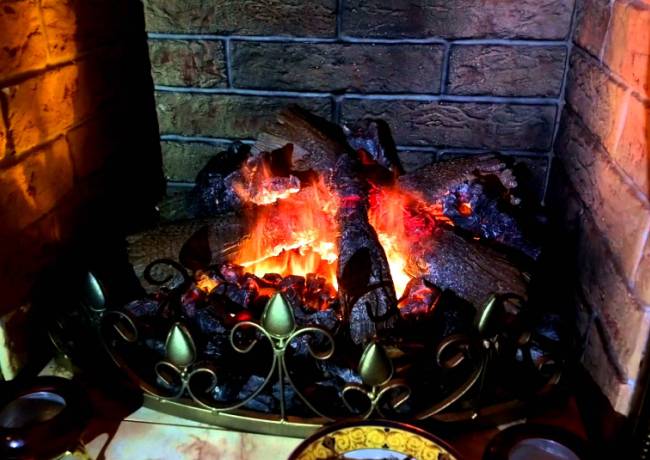
Variety of false fireplaces and placement
Depending on the capabilities of decorative fireplaces, they are divided into three conventional categories:
- Models with a full-fledged fire inside
- Models that simulate not only fire, but also smoldering logs
- Models that imitate real fireplaces only externally - they are also falg-fireplaces
See also our post about decorative grilles for a heating radiator
It is the third category of structures that is one of the most popular, since their construction is one of the simplest and does not require the laying of additional communications. In the first two cases, it may be necessary to supply gas or install a burner, a ventilation system.
You can place your own made false fireplaces in any place convenient for you: near one of the walls or in a corner. However, such a design should be combined with the interior, and not play the role of "abuse" that clutters up the room. They are often used in spacious rooms as decorative TV stands.
Learn the best way to make a brick fireplace
Available options
A decorative false fireplace is created from various materials, you can use cardboard, gypsum, polystyrene, drywall, plywood, chipboard and even brick. In most cases, these materials are flammable, so it is worth remembering the fire safety standards and not placing a real fire in the furnaces. If you plan to build a biofireplace burner into the firebox, which will create a real flame, then the choice of materials for construction should be taken more seriously. For example, build a brick structure, sheathe the firebox with metal sheets.
We will consider options when it is required to make an imitation of fire, which would be remotely or very similar to a real flame. And the simplest idea that immediately comes to mind is to create a suitable drawing. Anyone can draw a picture, but how this fire will look on canvas depends on the artist's talent.
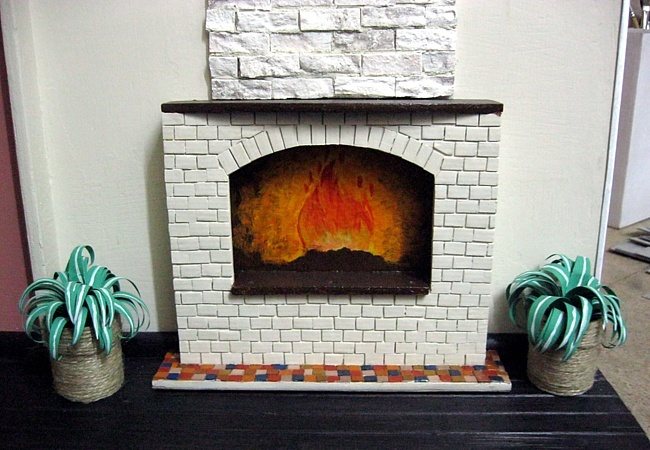

There are many other options for creating a fake fire in a fireplace that is more realistic than a painted one, and the most interesting of them are the following:
- using a steam generator is a modern way;
- the use of fabric and a fan is a theatrical solution;
- the use of LCD displays, TVs is an effective option;
- original lighting with a salt lamp is a useful technique;
- lighting with garlands is a simple method;
- use of candles, candle fireplace - design approach.
If you want to create a high-quality imitation of fire in the fireplace, you can use any of the options available, but remember that each method has its advantages and disadvantages.To understand what kind of fire for a fireplace is easiest for you to make with your own hands, let's look at all these methods in order.
Decorative fireplace by your own efforts
There is nothing difficult in making a false fireplace with your own hands. In short, the entire workflow is divided into a few simple steps:
- Come up with a drawing of the finished structure and choose its location
- Build a frame from a metal profile
- Sheathed with plywood, drywall or chipboard
- Make finishing


Drawings of a false fireplace. Click on the image to enlarge
Now let's take a closer look at what is needed for such a simple design and the main stages of its assembly.
General description of popular methods
One of the most difficult methods is to create artificial fire using generated water vapor, and we will start with this method.
To create a steam installation inside your raised fireplace, you need certain accessories and electrical skills. You can look for a ready-made solution, but it will be difficult to find it.
To build a steam generator, we need the following components:
- small quiet fan;
- DMX-controller and DMX-decoder - devices that allow transferring digital data and balancing the operation of all generator systems;
- LED lamp (LED);
- ultrasonic fog generators;
- pure water;
- suitable box, box.
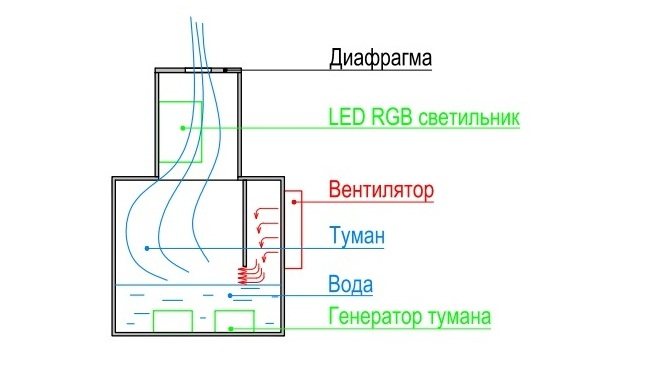

The principle of the steam system is very simple. Fog generators are installed in a suitable box or box. Pure, distilled water is poured into them, which, under the influence of a fan and an ultrasonic oscillator, begins to gradually evaporate. Note that the evaporation of water occurs at room temperature, and the vapor itself is cold. The rising steam from the evaporation of water is illuminated by an LED lamp, and the effect of a real flame in the fireplace is obtained.
To make the fire look more realistic, a diaphragm should be installed over the entire structure. A diaphragm with holes of different diameters will allow you to vary the speed of the air around you, and therefore create more realistic flames.
If we consider the processes taking place more deeply, then we should remember about Bernoulli's law, which tells us that the smaller the holes, the higher the speed of air flows.
Components are selected according to the main characteristics of the fireplace, at the same time, at the assembly stage, we plan the final result. You can buy such items in stores where steam electric fireplaces are sold, or in companies selling equipment for concerts, steam engines are also present here. The design diagram can be easily found on the Internet.
Opti-Myst


Electric fireplaces of the Opti-Myst series are an innovative patented Irish development in the fireplace is ordinary filtered water. Water is poured into a special reservoir, which is installed in the hearth. Thanks to the operation of the steam generator, water is converted into cold steam, which not only does not burn, but also humidifies the air in the room.
The steam is illuminated by halogen lamps, which are also installed inside the hearth, thanks to the illumination of the steam, it becomes indistinguishable from a real flame. Its only difference is 100% safety.
In order to keep the fireplace clean, it is enough to use the supplied brush to clean the hearth from limescale. Some Opti-Myst flame effect models are equipped with a heating function. In this case, the heating can be turned on and off at will; therefore, the hearths can be turned on at any time of the year, even in summer.
Homemade fireplace insert for a false fireplace
Here is such a fire I had assembled on the table:
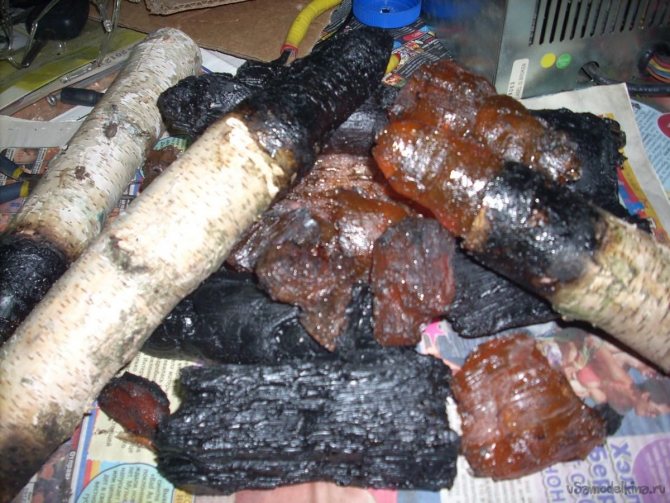

You will need: 1) Chinese fogger from air humidifiers.2) PC power supply 3) PC cooler 4) 12 Volt red halogen lamp 5) Epoxy resin (many) 6) Celikon (any cheap, many) 7) 220 Volt halogen lamps (Flickering like a candle. Sold in stores .)
So…. I promised my daughter a “fireplace” on New Year's Eve…. Closer to the point, I discovered that the furnaces on sale are either not even close to realistic, or cost fabulous money (2 thousand euros and more). I decided to do it myself ..
The "fire" itself, after long experiments, was made from a Chinese ultrasonic fogger (on Ali-Express it costs about $ 3.5). I didn’t take pictures of that process, but there I just made a metal container, fixed the fogger and cooler, in the top cover there was a slot for the “steam” to escape.
Here's a diagram:
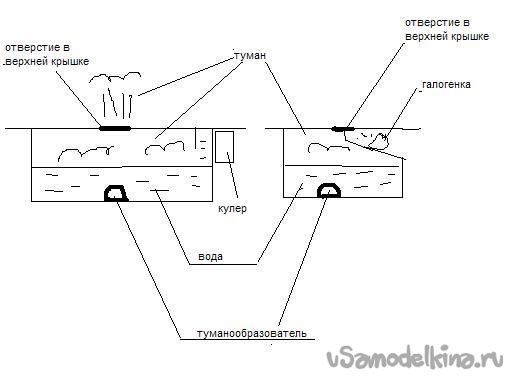

As is clear from the diagram, the fog formed by the fogger accumulates in a container above the water. The cooler blows in air and the fog bursts out into a slot in the top cover. At the same time, it is illuminated by a halogen lamp in an orange-red color. It turns out "fire". Above, the fog condenses, and since the lamp does not illuminate there, "smoke" turns out ... It is important that the structure is tightly covered with the top cover. Because fog is heavier than air, and if it has a "loophole" - it will pour out anywhere but up. I did this: I covered the edges of the resulting container with a thick layer of silicone, and on it I put a piece of laminate, smeared with liquid soap (so as not to stick), and let it dry. I got a perfectly smooth "elastic" along the edge. The top cover, made of a sheet of two-millimeter steel and painted with nitro paint, lies on it and fits snugly.
After that I started making the "fire" itself. I collected coals from extinguished fires in the forest and coated them with construction silicone.
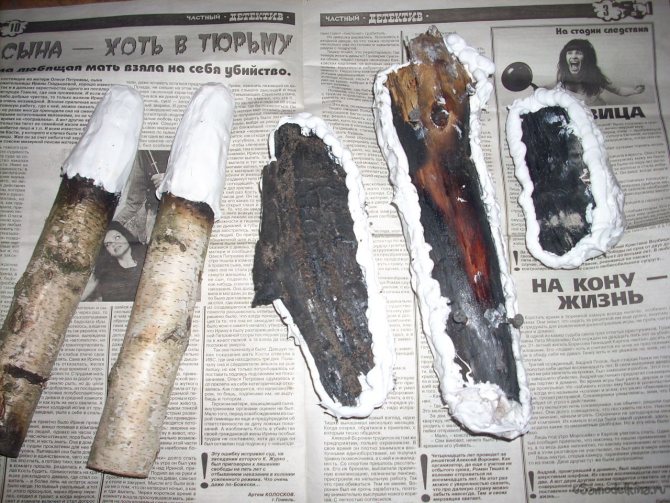

After drying, I took off the silicone molds and filled them with epoxy, which I had previously tinted with red. (Since she herself is yellow, it turned out to be orange). I sharpened the burnt logs after removing the mold, and then poured epoxy into the mold and inserted them back. I took out the finished "coals" and tinted with black matte paint from a spray can. [center]
Become an author of the site, publish your own articles, descriptions of homemade products with payment per text. More details here.
Optiflame


Optiflame flame technology creates a realistic simulation by using a mirrored surface and a rotating metal rod with metal petals that resemble miniature flames. Thanks to the light of the halogen lamps installed in the hearth, the light falls on the petals and is reflected on the mirror screen in the form of tongues of flame.
Recently, this technology has been improved, and now stencils of differently shaped flame tongues are cut into plastic, and LED backlights are used instead of halogen lamps. Thus, the flame looks as realistic as possible.
Also, some Optiflame flames have a built-in air filter that removes spores, pollen, dust and other allergens from the air. The air filter removes particles from 1 micron in size. This allows you not only to admire the flame, but also to purify the air in the room.
The hearth itself is powered by the mains. Fuel is not required for its operation, and, accordingly, it is not necessary to remove waste and clean it from soot, like wood-burning fireplaces.
Opti-V
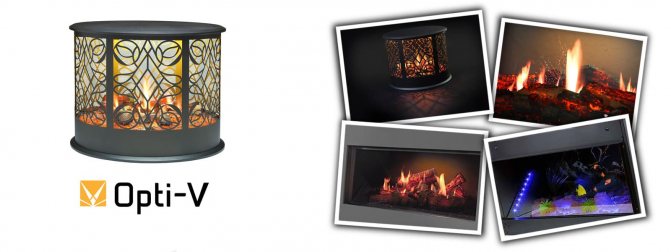

The Opti-V series is one of the latest developments on the electric fireplace market.The Opti-V flame effect models have an integrated LED screen. This technology allows you to project an image of brightly burning flames and flying sparks directly onto a screen that is installed in the hearth. The flame cannot be distinguished from a real fire; the sound effect of the crackling of burning logs is also integrated in the hearth.
There is also an analogue of the Opti-V hearth according to the principle of operation - the Aqua-V electric aquarium. The projection screen depicts the underwater world of the ocean with floating exotic fish. This is an ideal aquarium that does not require cleaning, changing water, or feeding fish.
Revillusion
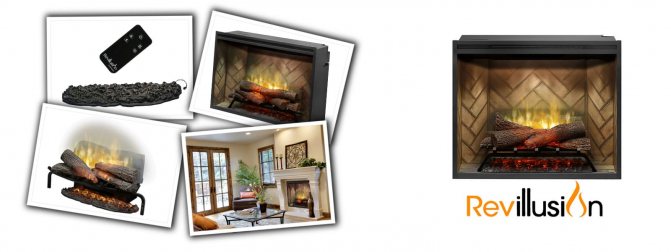

Fireplaces with Revillusion technology are a new solution in the fireplace market. The secret of this technology is the use of a Semi-Transparent MiragePanelTM, which replaces the traditional mirror. The mirror screen enhances the flame effect many times over. It does this by increasing visual depth and using RGB LED backlighting. The image of the flame is transmitted from a special flame simulation panel - MirageTM.
Due to the reflection of the flame on the screen, the visual depth of the furnace increases, which makes the flame as voluminous and realistic as possible. The efficient ComfortSaver heating system can also be switched on and off at will.
It is worth noting that all the effects of the flame have their own advantages, but all these fireplaces are united by ease of installation and maintenance, fire safety, their flame does not burn and they do not emit harmful combustion products.
Do-it-yourself options for artificial fire in the fireplace
A home fireplace is always cozy and stylish. Fire and light crackling of wood soothes and pacifies. No wonder they say that you can look at the fire endlessly. But modern housing is not always suitable for installing a fireplace. Therefore, many technologies have appeared, with the help of which the imitation of fire in the fireplace becomes like a real flame. The main problem in this is to create a realistic image, as close as possible to a real fire.
At first, the designs were simple: a dummy of firewood, which was illuminated from the inside. It didn't look like fire at all. Then there were attempts to give the imitation of the fireplace dynamics. The design became more complicated: a fan, a backlight lamp and foil tapes were used. The latter fluttered under the flow of air from the fan, casting glare and shadows. All this very vaguely resembled the flickering of a flame.
Tools that will be needed in order to simulate fire in the fireplace
If it was decided to start building a fireplace, you need to get a circular hand saw. It is about the size of a hair clipper and can remove dust. With its help, it is much more convenient to cut drywall, and the work will turn out more accurate than in the case of using an electric jigsaw or a hand hacksaw. When buying, it is important to ensure that the cutting depth is more than 24 mm. Drywall is a pliable material, so the manufacturer, power, and so on will not play a special role.
You will need to get a few bars and an abrasive mesh. This mesh can work like sandpaper, but when processing crumbling and loose materials, it will not get clogged with dust. A mesh is applied to a special block for precise processing. Bars in the form of a parallelepiped make it possible to process planes, and shaped bars - complex shapes of surfaces.


Diagram of a plasterboard false fireplace.
If you have these tools at your disposal, you can make a drywall fireplace that will practically not differ from the real one.
In a city apartment, a fire will not work, therefore an imitation of a fire in a fireplace is suitable. You can buy a ready-made plastic dummy or make a lurid one, but all this will not look very nice.
There are devices on the market called electronic photo frames.They are an LCD display that adapts to display pictures. This frame has simpler control electronics than a tablet or computer, so it costs much less than a computer display. Many models of these frames provide the ability to display moving images.
With the help of electronic photo frames, the appearance of an apartment fireplace can be changed daily depending on your mood. With simple manipulations, a drywall fireplace can even become an aquarium.
To a large extent, the price of an electronic photo frame will depend on memory capacity and a set of service functions. But they are absolutely unnecessary for the fireplace - you only need to show one animated picture.
The frame with a 17 "diagonal, made in China, will not affect the family budget in any way, and a 17" diagonal is 40 cm, so you can get a decent size firebox. The frame will be in the depths of the niche, which is artistically decorated under a plasterboard fireplace with your own hands. Such an imitation of a fireplace can mislead anyone, and it can give the owner the illusion of a flame.
Instead of an electronic frame around which a false fireplace is built, you can purchase a ready-made inexpensive false fireplace, and then add it with a decent frame.
For some people, the most acceptable option for decorating a false fireplace is the placement of candles in it, so you should not write off this option.
Modern ways of creating artificial fire in the fireplace
The designs were more realistic, where to simulate the tongues of flame, scraps of fabric were already used, which also fluttered under the action of a fan and were illuminated by a lamp. And although it also did not look very much like a real fireplace, but such primitive designs with imitation of coals and flames became the basis for more advanced models.
As a result, a large number of technologies have appeared, with the help of which an imitation of fire in a fireplace is created. Next, let's take a look at some of the more popular options.
The simplest solution is to place a fire pattern inside the hearth. A better option is an electric photo frame with a similar image.
Simulation of fire can be achieved by placing candles in the fireplace niche. Many people do this, while creating a kind of additional comfort in the room. To enhance the effect, mirrors can be placed on the inner walls of the fireplace.
To simulate fire with your own hands, an electric fireplace or a bio fireplace is also suitable. They are placed inside on a shelf and connected to the network.
Steam generator
More complex designs are also more realistic. A system using water vapor gives a good effect. It consists of the following components:
- fan;
- DMX controller and decoder (these devices transmit digital data and coordinate all elements with each other);
- lamp, better than LED;
- ultrasonic fog generators;
- distilled water;
- cardboard box.
Fog generators are housed in a box. The water poured into them begins to evaporate and rises under the action of the fan. The steam is illuminated by a lamp and creates a flame effect.
Electric motor
Models using an electric motor are also popular. A small motor rotates a drum or other figured part through which light from an LED lamp passes, due to which the effect of a burning fire is achieved. Glare and shadows fall on the dummy firewood or the screen. Since everything happens in motion, the picture is bright and spectacular. In addition, the design can be made so that the speed of movement and the intensity of light change. However, everything looks rather unnatural and artificial.
This model can be slightly improved by adding illumination of the inner walls and a translucent screen, as well as a device that will simulate the crackle of burning firewood. Unfortunately, the use of a large number of electrical appliances leads to the fact that they will add their own noise.
Television
Separately, it is worth noting designs based on the use of TVs. To be more precise, it is placed inside the fireplace LCD screenwhere the image is displayed. Most often these are flames. But if you wish, you can start up the image of beautiful landscapes, etc. A good effect can be achieved if the screen is supplemented with an optical system that includes filters, lenses and glass. This allows you to make the image three-dimensional.
3d image
The fire in the fireplace can be created very realistically using holography... For this, a flat image is used, which, with the help of special technologies, acquires three-dimensionality. If you add an optical system and LED lamps, you can achieve a very realistic image of a flame in a small space. In this case, the depth of the picture will exceed the real depth of the fireplace.
LED technology
Also, an excellent effect can be achieved using LED technology or Real Fire. They are based on the principle cold fire... An important element of the system is the ultrasonic steam generator for the fireplace. The steam emanating from it is illuminated by halogen lamps. To give the desired color, special filters are used. At the same time, the steam below glows brighter and resembles a real fire. Above, the light is dimmer, which creates a smokiness effect. Making an ultrasonic steam generator with your own hands will not be difficult for you.
Pepper's ghost
In other technologies, a trick called Pepper's ghost, used by theater directors and magicians, comes to the rescue. For example, are used mirrorsinstalled in a niche at different angles. Thus, it turns out to combine individual objects into one volumetric picture. The Opti-Virtual series allows a virtual image of a fire with sparks to be combined with a dummy log. Using this technology, you can achieve extraordinary realism. The outbreak looks very natural.
Silk fabric
And below are the steps on how to simulate a fire in a fireplace. from ordinary scraps of fabric:
- a small fan is placed in a cardboard box (fits from the system unit);
- install red, blue and orange LEDs above the fan on the vertical axis;
- below the diodes, pieces of mirrors are needed, which will create glare;
- shreds of silk fabric of different sizes and shapes are attached next to the fan;
- the box is equipped with the necessary decoration and is placed inside the fireplace;
- the simulated fire construction is now ready to use.
Imitation of fire in the fireplace: manufacturing technology
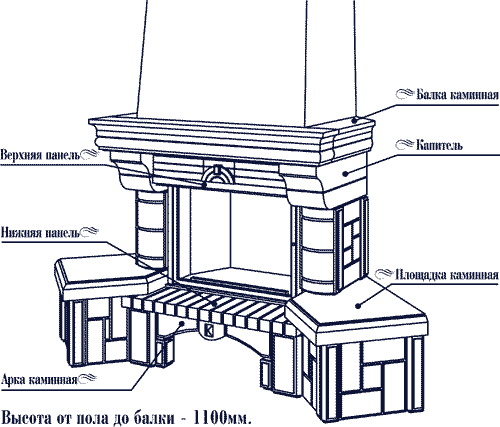

Fireplace scheme.
In most cases, the fireplace is located near the wall. But a modern apartment in the city is not a castle. The wardrobe can be easily moved at will, but a false fireplace, to which everyone will cling, will need to be broken and made again.
It is worth noting that an imitation of a fireplace can be a good addition to a dining room or kitchen.
First of all, you need to choose a suitable place. A plasterboard corner fireplace can be an excellent pedestal for a TV, while on the wall space can be made for a beautiful picture.
In a not too large apartment, a corner fireplace may be the only acceptable solution.
In the apartment, a false fireplace will become the dominant component of the interior. That is why close attention must be paid to its design. If you decide to make a fireplace with your own hands, the drawings will help make the structure beautiful. The drawing is recommended to be done on a sheet of Whatman paper in full size.This drawing is attached to the place of the fireplace being manufactured, placed on the frame and examined from different sides. If it fits, then a layout is made.
When developing a drawing for a false fireplace, it is recommended to turn to ready-made options for stone fireplaces, and then think about the possibilities of transforming them into a false plasterboard fireplace.
According to the size and drawing, it is most often recommended to calculate the material consumption, and then start work. But a false fireplace is aesthetically very responsible object. In this regard, it is necessary to spend one day on its exact layout, so that you do not have to break the finished structure in the future.
The mock-up can be easily made from polystyrene and packaging cardboard on PVA glue or scotch tape. No precise dimensions or fine finishing required. The finished layout will need to be painted with white quick-drying paint.
All design and construction flaws can be seen on the layout. The layout is lightweight, so it can be easily moved along the wall or moved from corner to corner. On the model there is an opportunity to work out the skills of processing a curved surface and take up the manufacture of a false fireplace. The time spent on the construction of the model will pay off with the quality and speed of work.
Plasterboard fireplace construction process
Fireplace installation diagram.
- A do-it-yourself false fireplace is built on a frame made of a U-shaped metal profile (UD or CD). You can cheaply purchase junk leftovers or use the remaining materials from previously completed work. If there are wooden slats or a picket fence left in the shed or closet, they may also fit - the structure will not bear the load. The frame is assembled on self-tapping screws. First of all, the support frame is fixed to the wall and the rest of the frame is assembled.
- The verticality and horizontalness of the frame parts is checked using a building level. The squareness of the mounting area can be checked with a tape measure or a cord. The rectangle has equal diagonals. If there are different diagonals, then you get a parallelogram.
- The frame is sheathed with plasterboard sheets on self-tapping screws. If the decorative finish will be carried out directly on drywall, then the cross member and sidewalls should be sheathed in 2 layers. If a deep relief is expected, cushions made of any material - from polyurethane to stone - should be glued to the frame with construction silicone or assembly glue. The pillows are glued in a rough manner according to the relief. They are able to retain material and save it.
- According to the technology described above, it is necessary to make the foot of the fireplace from several drywall sheets. It needs to be cleanly processed in shape, tried on, marks made on it and put aside for a while. The mantel is made in the same way.
- With deep finishing on alabaster and gypsum, the sidewalls are covered with the material, after which they are processed according to the shape. When finishing on drywall, you will need to round the corners. Next, flutes are made with an abrasive mesh on a bar with a side sliding stop on the guide rail. If the skills for carrying out this work are absent, you must first practice on a piece of drywall.
- Next, a foot, a mantelpiece is mounted on silicone or mounting glue. The shelf must be securely fixed as it will carry some load.
- The next step is to carefully putty all existing slots and holes with self-tapping screws. It is carried out in 2-3 layers until a uniform surface is obtained. If necessary, additional decorative elements are glued to the crossbar and sidewalls: monograms, rosettes, monograms, and so on. These elements must be made of non-soaking material. The putty should be used with water-based PVA.
- Next, the firebox is painted inside in matte black and a frame is made of electric cardboard or plywood.This frame will serve as a frame for the photo frame (imitation of fire). Only the screen should be visible. The framing will need to be made removable and painted in the color of the firebox.
- In the final stage, a finishing PVA putty should be used. Before that, you can paint the fireplace like a stone. All that remains is to place the simulator of fire in the fireplace in the firebox, put its frame in place. After a while, even the owner of the apartment will think that this imitation of fire is a real fireplace.
How to make a portal with your own hands?
The portal is an important decorative detail of the fireplace. There are many portals on sale, but you can make it yourself.
- Pieces of plasterboard are glued together with assembly glue, recesses, hollows are selected with an abrasive mesh, and the necessary shape is given.
- Further, all the cracks in the portal must be carefully sealed with putty. The entire outer surface is putty and smoothed with an abrasive mesh until an even layer is obtained. If necessary, grease and iron again.
- At the end, the PVA filler is impregnated. The result is a washable, semi-matte, reflective surface that is white in color. Before impregnation, you can paint the structure with marbled gouache.
It is quite easy to simulate fire with decorative fireplaces. If you do it yourself or order a metal grate for a false fireplace, the design will have an even more natural look.
It is quite simple to build a false fireplace with your own hands. An imitation fire will seem like a real fireplace design.
Imitation of fire in the fireplace: design options
Decorative hearths made of gypsum plasterboard require compliance with fire safety standards, since such a design is designed exclusively for artificial fire.
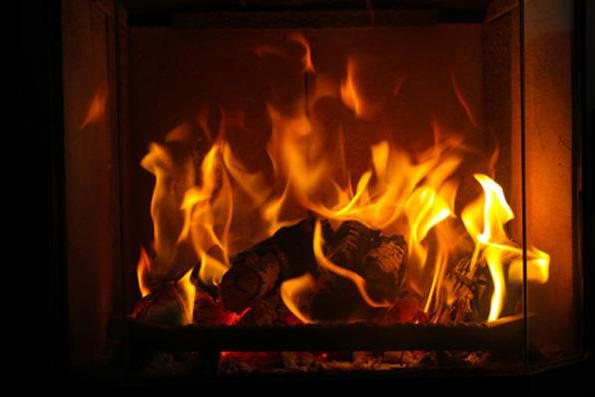

Most often, craftsmen use the following types of fire imitation:
- Use of steam.
- Creation of "theatrical fire".
- The use of salt lamps.
- Installation in the TV hearth.
The most difficult way to create decorative flames is with steam. Not everyone can create such an imitation, because it requires a specific set of components and special equipment, as well as skills in working with electronics.
To make this kind of fire, you need to prepare:
- DMX controller.
- Fan with a diameter of 9 cm.
- LED RGB lamp.
- DMX decoder.
- 3 ultrasonic fog generators.
These devices must be selected according to the parameters of the built fireplace, the layout, as well as the manufacturer and characteristics. It all depends on what kind of initial result the master wants to get. All these devices are part of steam electric fireplaces, as well as concert electrical appliances that create a steam effect.
With the correct connection of the devices, it is possible to make an imitation according to the cold glow system, which makes it possible to make a simulated fire, which is difficult to distinguish from a real hearth.
If the master wants to use just such a method of simulating a flame, it is important to provide for the necessary parameters of the components and mount the hearth of the required size.
The principle of operation of such an electric fireplace looks like this:
- A fog generator must be placed on the bottom of the container, into which water is pre-poured.
- The generator has a membrane that vibrates at a specific ultrasonic frequency, providing a reduced pressure. Therefore, it turns out, one might say, a vacuum and water evaporates at room temperature.
- Thanks to this, the steam rises upward.
- Above, there is a backlit LED-lamp.
- A diaphragm is arranged above the structure.
Assembly according to technology will make it possible to create a more natural imitation of a flame in a false fireplace on your own. The second way is the theatrical version. As already clear, this method is used in theatrical circles, for various kinds of performances.However, it is also suitable for making a dummy, an imitation of fire.
To make such an imitation yourself, you need to prepare the following items:
- A flap of light silk fabric in white.
- 3 halogen lamps with reflectors.
- Silent, powerful fan.
- 3 filters: red, orange and blue.
- A box or a special bowl for assembling a false structure.
When everything is ready, you can start assembling according to the following scheme. At the bottom of the box, bowl, you need to arrange a fan. The cord must be routed out. Further, halogen lamps must be fixed on one axis, so that the light is directed upward. Then, at a distance of 20 mm above the lamps, it is necessary to arrange light filters.
From the prepared material, it is necessary to cut shreds of various sizes, preferably a triangular shape, since they will be more realistic.
The next step is to fix the flaps to the box, bowl along the edges of the fan. When you turn on the fan to the power grid, a not real, but very similar to natural fire will appear in the fireplace. This method is quite simple and makes it possible to make an almost real, bewitching flame in the fireplace.
Preliminary preparation
The construction of such a hearth model is a rather costly and laborious process that requires preliminary preparation.
The first thing to do before starting the main work is to determine the location and type of structure. What it will be is up to you. Do-it-yourself imitation of a drywall fireplace can look like a niche built into the wall, be a wall model (that is, mobile) or a corner one. There are a great many options for frame designs, it all depends on your personal preferences and the general interior of your apartment or house.
So, the location has been chosen, the type has been determined, it's time to start building the schematic drawing. This is necessary so that you have a clear idea of the result, as well as the order of work. The existing sketch will definitely help with the calculation of the required materials.
Having prepared everything you need, having freed up a sufficient amount of space, you can proceed to the installation of the structure.
Artificial Fireplace Fire: Salt Lamp
The use of salt lamps in artificial fireplaces to recreate decorative flames is beneficial and considered effective. A salt lamp is a special light device with a shade made of an intact salt crystal. An ordinary light bulb is located in the inner part of such a plafond.


When the lamp is connected, the plafond begins to warm up and exude negative ions into the air.
They bind positive ions (from household appliances), which have a detrimental effect on human health, thereby helping to improve the well-being of the residents of the house. The disadvantages of this method include the rather high price of salt lamps, and the advantages: realism, aesthetics and ease of installation.
Using shades of various colors, it is possible effectively and very simply, to make a non-natural flame in the fireplace yourself. In addition, by using several lamps of different sizes at once, it is possible to make an imitation of a fire.
Choosing the right style of a raised fireplace
In each case, the preparation and installation of such a fireplace does not take much time and is a creative work for everyone.
First you need to say that imitation of a fireplace can be of the following types:
- wall imitations that are simply attached or attached with self-tapping screws to the wall;
- rooms built into the wall;
- island imitations (they stand on their own).
Also, imitation of a fireplace with your own hands involves the choice of various shapes and compositions. For example, as you can see in the picture below, you can make a fireplace in the shape of a triangle.
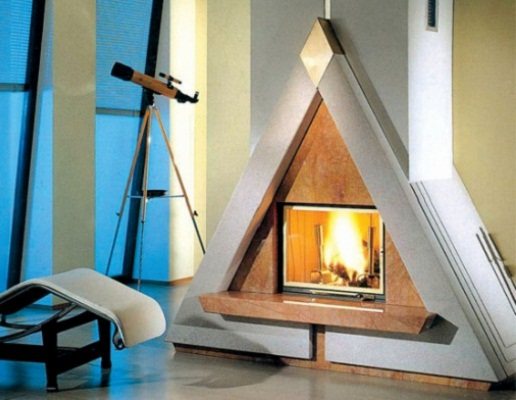

Fireplace - triangle
You can also use these fireplaces in different ways. Some store beautiful books and things in his niche, in other cases you can put logs or artificial wooden figured firewood there.
Most often, lighting and imitation of fire are made inside, which we will talk about later.
Do-it-yourself fireplace fake: TV instead of a fireplace
Another easy way to realize a non-natural flame in a fireplace is to use a flat-panel LCD TV. But this method is considered the most costly, since this technique is expensive. Special LCD TVs have been developed, which are produced specifically for artificial fireplaces.
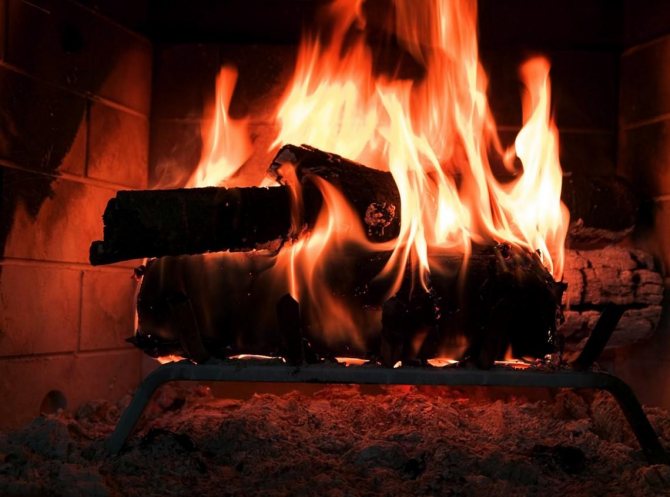

They contain a video recording of:
- Playing tongues of flame;
- With embers;
- With a bright fire.
This recording goes on in the hearth of the false fireplace. Sometimes TV can be supplemented with special optics, which consists of light filters. With the help of it, the image of fire will be the most expressive and voluminous. In addition to this optics, it is possible to use a mirror system. They are located in the corners of the fireplace, and the picture is more realistic, such lighting looks very beautiful. In rare cases, it is possible to use holographic installations as well. But this is not cost effective enough.
Varieties of decorative fireplaces
False fireplaces can be conditionally subdivided into two types - interior and electric. The first ones serve as a decoration of the room, and thanks to their smokeless design, based on the combustion of ethyl alcohol and the release of a certain amount of steam during this process, they humidify the air. One of the indisputable advantages in the construction of such models is that it is not at all necessary to use refractory materials, you can use wood or drywall. An imitation of fire in a fireplace is created by laying artificial wood made from heat-resistant ceramics around a gas burner. This whole structure is quite lightweight, easy to operate, does not overload the space of the room in which it is installed, and, importantly, does not require chimneys.
Electric types of fireplaces are not only an interior decoration item, they are also an additional source of heat. Very powerful and at the same time economical in energy consumption modern models do not require any special difficulties in operation and maintenance. Artificial fire looks more than natural in them.
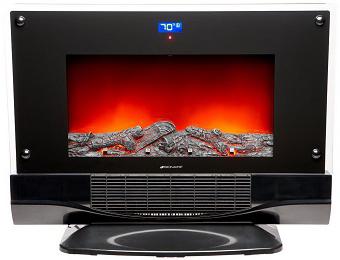

Decorative firewood for fireplace
In specialized salons you can find an abundance of options for such products; on sale there are quite realistic firewood with a natural pattern of logs. They can be plastic or ceramic. Any imitation, purchased or made on your own, is intended to give realism to a decorative fireplace to help you feel all the splendor: home comfort, harmony, tranquility and warmth.
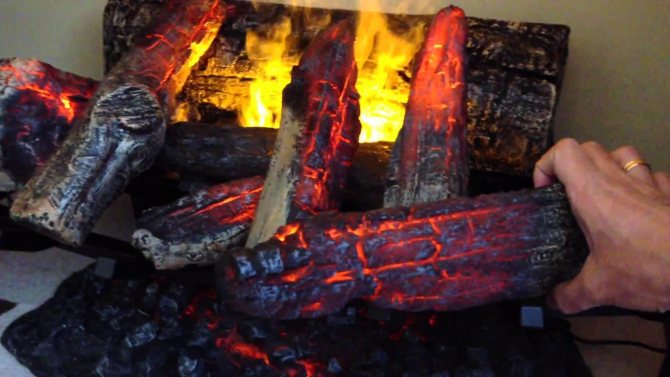

Imitation of plastic firewood or coal, has a fairly simple principle of operation.
Coal and firewood are illuminated with red lighting. The light bulb can be located inside the wood. Of course, this is not so reliable, but still. For more expensive electric fireplaces, flickering or a picture of the artificial transmission of tongues of fantastic flame is characteristic. It is possible due to a special mechanism in which special elements rotate around the lamp, alternating with transparent and shaded areas. Such illumination can be located either behind the dummy logs, or in the inner part.
It is possible to apply the exact same lighting system to achieve the effect of fire, using natural coal, which must be placed in the niche of a false fireplace. In this case, the backlight should be positioned from the bottom.
How to build a simple decorative fireplace
Biofireplace - the design is simple. It is based on a burner, but you can do without it. In this case, you need a heat-resistant pallet with high sides (you can use a baking sheet), a container into which fuel is poured (a tin or glass can is suitable), stones. If a portable or tabletop decorative fireplace is being built, you can arrange it in a glass container (for example, an aquarium of any shape).If you have all these materials, let's start designing.
- We put a jar on a baking sheet, put stones around it (you can add artificial logs for the entourage, they are sold in a wide variety).
- We remove the wick from the jar.
In principle, the design is ready. But be careful: if you place it in a false fireplace, its inner surfaces must be finished with a heat-resistant material - this requires safe operation of fireplaces that use an open flame. You can add fuel only when the liquid poured earlier has completely burned out.
